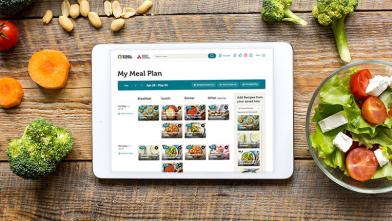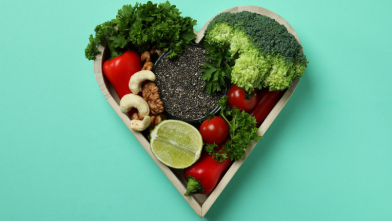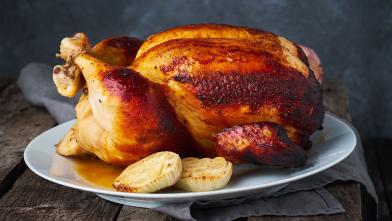If you have diabetes, you may have heard you need to cut out all sweet foods from your eating plan. But that’s not true! There are ways to enjoy all your favorite foods (including desserts) AND reach your health goals—you’ll just have to make a few adjustments. Changing the foods you eat may feel overwhelming at first, but we’re here to help you make the best choices.
How to Fit Dessert on Your Plate
Even for people without diabetes, it’s recommended to save desserts for special occasions instead of having them every day. But there are ways to include a little something sweet between birthday parties and holiday celebrations.
The first thing to consider is the dessert’s portion size. Depending on how large or small it is, you’ll need to adjust the amount of the other foods on your plate to make room. When we think of a typical dessert, it most likely contains carbohydrates, fat, and sometimes protein.
One-quarter of your Diabetes Plate can be filled with a carbohydrate, which is the dessert in this case. Remember, for people with diabetes, it’s important to know the total grams of carbohydrate per serving versus the amount of sugar used in a recipe. When choosing a dessert, check the Nutrition Facts label (if packaged) or the recipe for the total grams of carbohydrate.
Once you know the total grams of carbohydrate in a serving, see what adjustments you can make to fit it on your Diabetes Plate. For instance, you may want to ditch the serving of mashed potatoes (also a carb food) to enjoy a scoop of ice cream. The Diabetes Plate is our overall guide to healthy eating. Consider adding more non-starchy vegetables to increase the nutrients and fiber of your overall plate.
How to Choose the Right Dessert
Moderation includes portion control, but it also means being picky about what you eat. When it comes to desserts, it could mean looking for sweets that are:
- Mostly made with real fruit or dark chocolate
- Airy—made with lots of egg whites, like angel food cake and sponge cake—which cuts down on the density and carb count
- Made with less sugar than traditional recipes to cut back on the total grams of carbohydrate per serving
It’s important to know that sugar-free options aren’t necessarily lower in carbs. A “sugar-free” label on food packaging usually means it contains a different type of sweetener from white sugar, often a sugar substitute, but the other ingredients (like flour) add to the total grams of carbs. Your best bet is to check the nutrition information either on the food product or its recipe to find out how many total grams of carbohydrate are in the dessert. When in doubt, choose the dessert with the least amount of carbs.
Diabetes-Friendly Desserts You Can Make
If you’re craving something sweet at home or want to bring a diabetes-friendly option to a celebration, try these recipes. But remember, portion control and moderation are still important even for better-for-you desserts.
- Baked apples: Place a cored apple sprinkled with cinnamon in a microwavable bowl and microwave for 3–5 minutes. This baked apple can be a comforting dessert with only 15 grams of carbohydrates.
- No-crust blueberry cobbler: Place ¾ cup fresh or frozen blueberries in a microwaveable bowl and microwave for 45 seconds. The heated blueberries taste like a cobbler without having a carb-heavy crust. If you’d like, you can add a dollop of whipped cream without increasing the total grams of carbohydrate in this dish.
The Verdict
Yes, people with diabetes can have dessert! Ultimately, it’s all about balancing the carbohydrates, fat, and calories in desserts with other healthy choices. Sweet foods aren’t something you have to give up because you have diabetes, they’re something you can enjoy in moderation with the right adjustments based on the Diabetes Plate.
Remember to check out our other dessert recipes!








